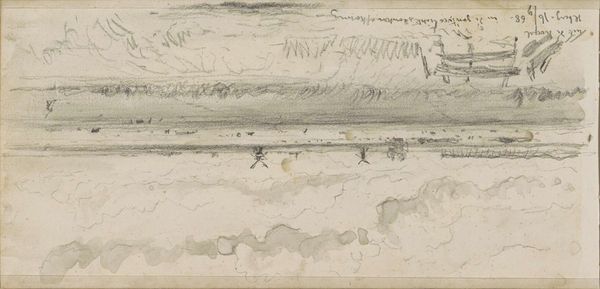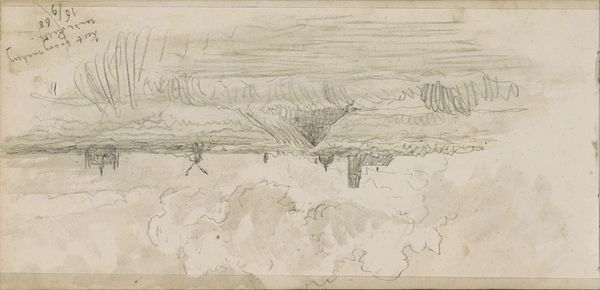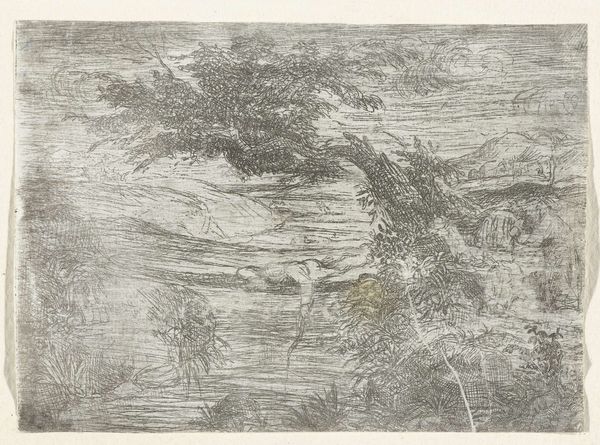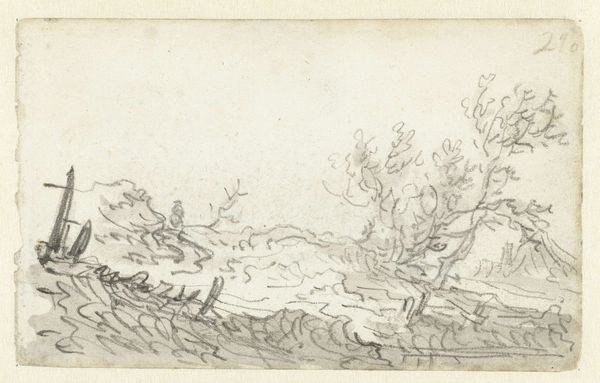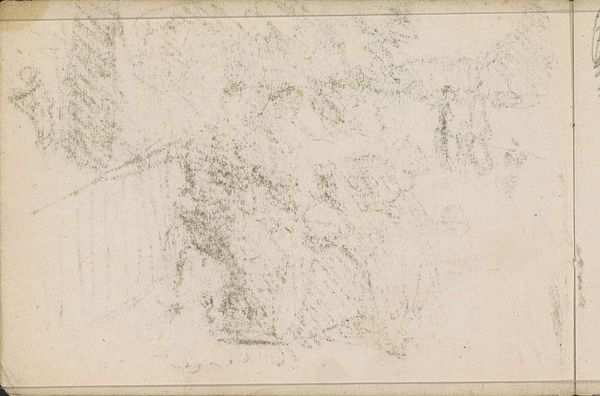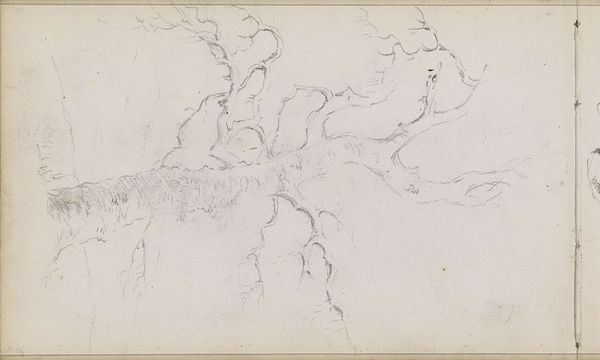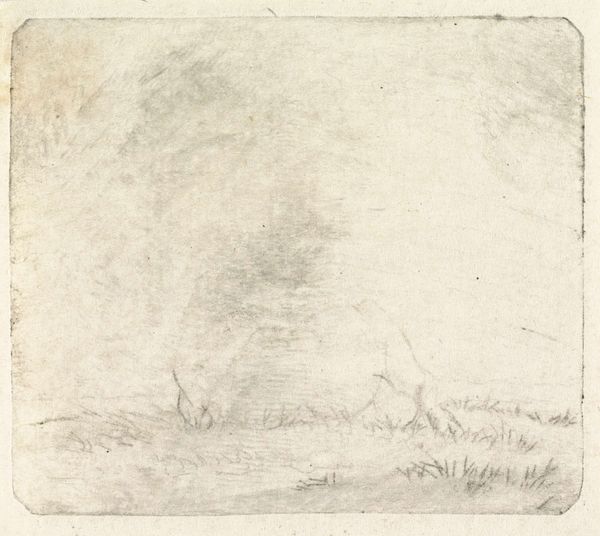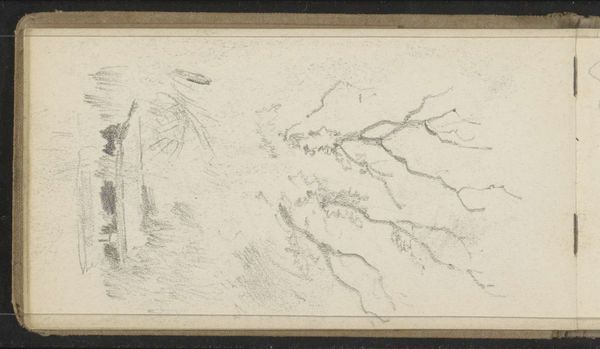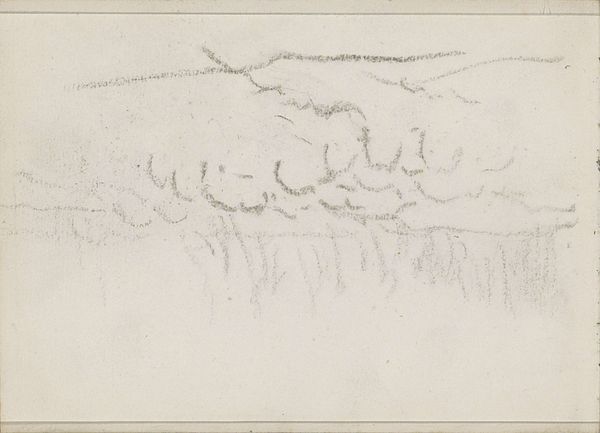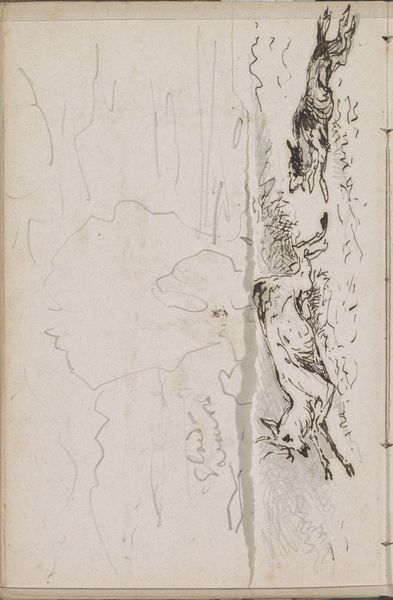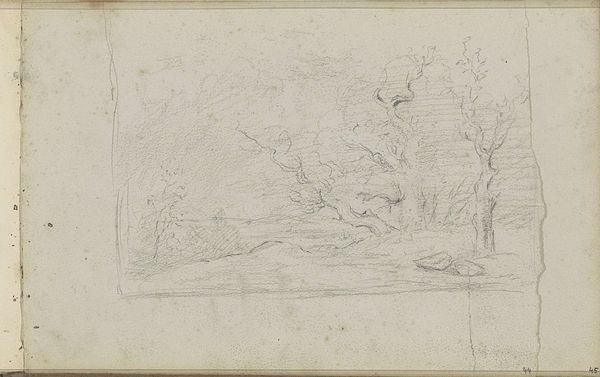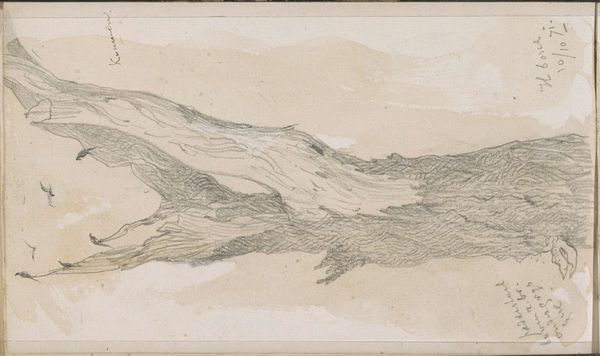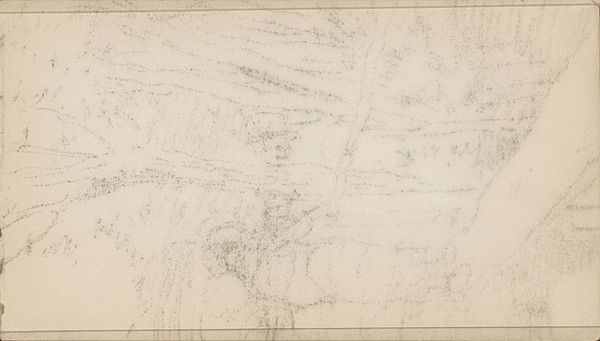
Copyright: Rijks Museum: Open Domain
Curator: I'm drawn to the immediacy of this piece. "Molen bij de Rottekade" by Johannes Tavenraat, dating from 1868-1869. It’s a work on paper, executed in pencil and charcoal and held in the Rijksmuseum collection. Editor: My first impression is how ethereal it feels. A quick capturing of the scene using simple materials. The cloud formation really draws my eyes. Curator: The cloud formations mirror something more than weather—don't they suggest turmoil, a sort of industrial premonition looming above a still agrarian scene? The windmill itself, almost obscured, represents a dying way of life as the Dutch landscape transformed with industrial advancements. Editor: Yes, obscured, you’re right. You can hardly make it out. It looks almost carelessly composed, but maybe that’s the beauty. I like that it’s a study, allowing us a peek into Tavenraat’s artistic process, his labor of observing. The accessibility of paper and pencil makes you wonder where this was drawn and what he was doing when making it. Curator: There's a definite romantic quality. That is to say it certainly captures the feelings of sublime beauty and tranquility amidst change that so characterized Romanticism. Tavenraat uses those muted tones to emphasize a gentle melancholy and perhaps, he may be hinting at a broader feeling in the culture about loss? Editor: And, even as a study, it's a saleable object made by hand. It speaks of individual experience in a changing, industrializing society. Who bought these types of artworks? How were they used? We could explore these questions as part of the bigger material culture of 19th century Netherlands. Curator: Indeed. To meditate on such shifts, through imagery of labor and evolving landscapes—Tavenraat gives form to both cultural memory and the feeling of his moment. Editor: This quiet drawing on paper opens onto very broad historical perspectives on landscape, labor, and art objects as commodities. Fascinating.
Comments
No comments
Be the first to comment and join the conversation on the ultimate creative platform.
